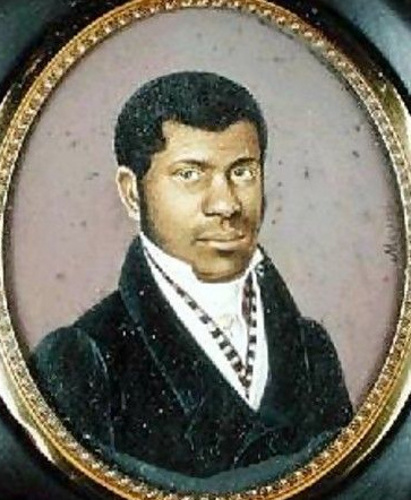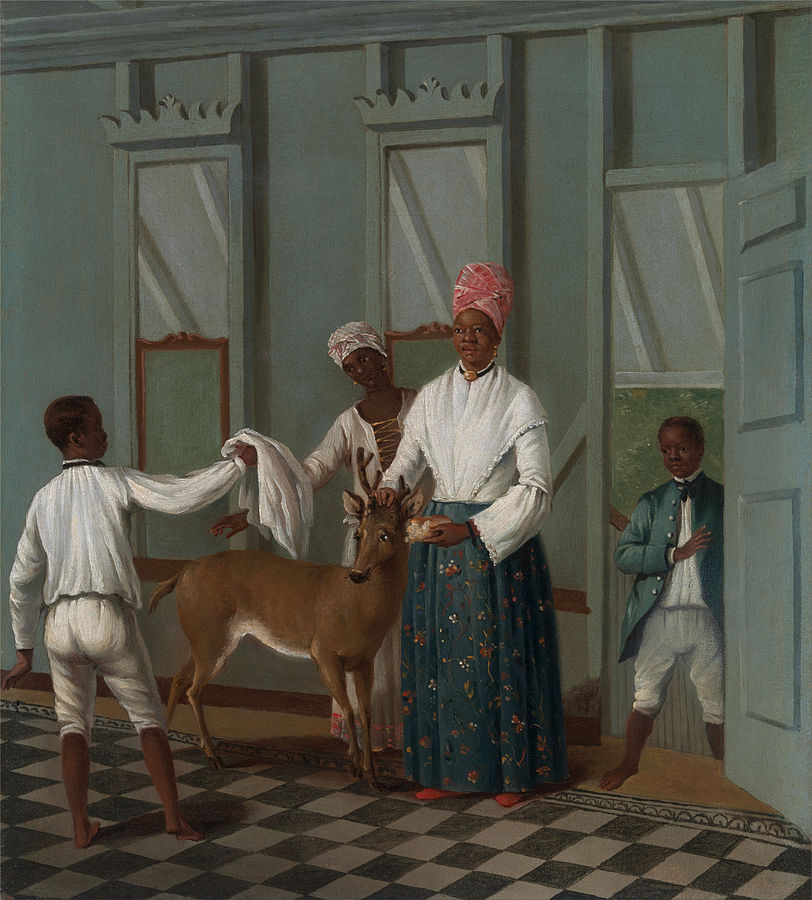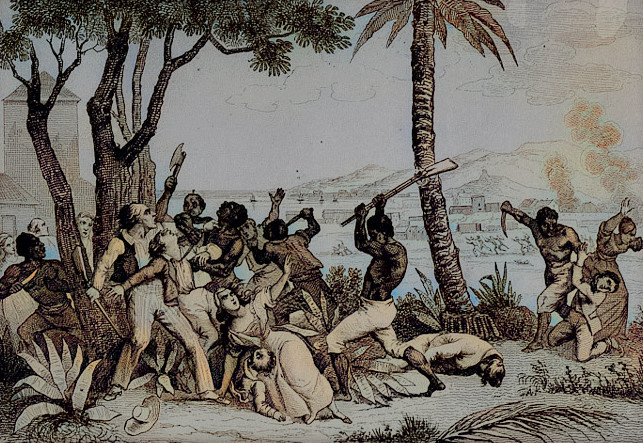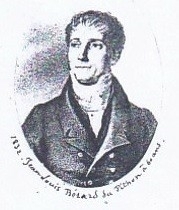France at that time was mistress of the islands of Martinique, Guadeloupe, and Saint Domingue (present-day Haiti). These Caribbean possessions, until then prosperous and tranquil, deeply suffered the disturbances of the French Revolution. The slaves and the mestizos rose up against their masters and employers with the intention of shaking off their yoke, just as the nobility had been suppressed in the mother country.
Among the prosperous families of Saint Domingue was that of Jean Bérard du Pithon. Pierre Tousaint, a black, was one of his slaves.
Pierre was only 21 years old when the disturbances of the Revolution led the family to take refuge in New York. Toussaint accompanied them, and thence his story truly begins.
The family, belonging to the nobility, was able at first to live well in New York with the savings they brought with them. Like many of the French emigrants after the fall of the Bastille (1789) in Paris, who left the country with a fixed amount of money and the certainty that the Revolution would not last long, the Bérard du Pithon family also expected a quick return to their homeland, judging that the revolution in Saint Domingue would be short-lived. Many so deceived themselves and, depleting their financial resources, soon faced dire circumstances.
The Bérard family, then, had to reduce considerably the level of its social status, feeling threatened to resort to jobs incompatible with their condition in order to live.
It was in this sad predicament, after eleven years of happy association, that Monsieur Jean Bérard died in 1791, leaving the aristocratic Marie Elisabeth Bossard Roudanes a widow. She had to confront the adverse conditions alone and, moreover, in precarious health.
But the hand of Providence watched over her. The “hand of Providence”: a beautiful metaphor to characterize the watchfulness with which God accompanies and aids the lives of His creatures. Religious art customarily presents it as a charitable white hand; in this concrete case, the “hand of Providence” was a black hand: the hand of Pierre Toussaint.
This modest slave, who could so easily have tried to escape from the yoke of his mistress in the United States, acted in relation to her with a dedication and a delicacy of sentiment that few children have even in relation to their own mother.
After completing a schedule of duties that required great selflessness and that he fulfilled to the end, Pierre Toussaint, by his own decision, strove even more in order that his mistress would not want for anything of the social conditions and comforts of life that corresponded to the education she had received.
 At the suggestion of his deceased master, Pierre had learned the skills to practice the art of dressing ladies’ hair in the small but already rich New York of that time. Imaginative and gifted with good taste, he developed various hairstyles that were much to the liking of his affluent clients, who then paid him well for his services. In a short time, Toussaint came to be sought out by all the rich ladies of New York, and he thus obtained the necessary resources to support his mistress.
At the suggestion of his deceased master, Pierre had learned the skills to practice the art of dressing ladies’ hair in the small but already rich New York of that time. Imaginative and gifted with good taste, he developed various hairstyles that were much to the liking of his affluent clients, who then paid him well for his services. In a short time, Toussaint came to be sought out by all the rich ladies of New York, and he thus obtained the necessary resources to support his mistress.
However, he accomplished this with such skill and discretion that he was often able to hide from her a good part of his self-denial and generosity. He did this without lying, because Toussaint was very truthful and, as a fervent Catholic, he avoided any transgression of the Commandments of the Law of God.
Plinio Corrêa de Oliveira, foreword to Memoir of Pierre Toussaint, Born a Slave in St. Domingo by Hannah Sawyer Lee, 2nd rev. ed. (Sunbury, Penn.: Western Hemisphere Cultural Society, Inc., 1992), 13–15.
Short Stories on Honor, Chivalry, and the World of Nobility—no. 896












